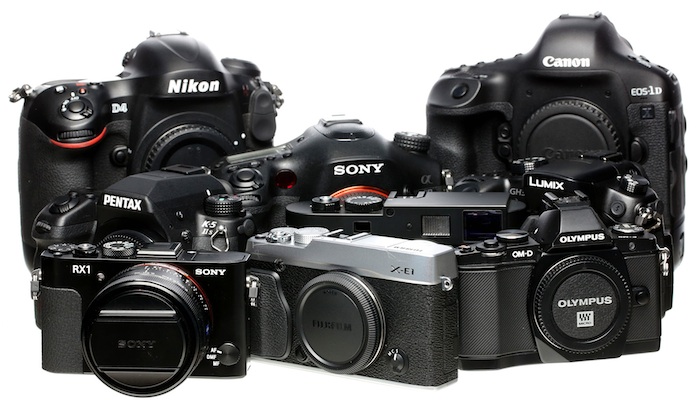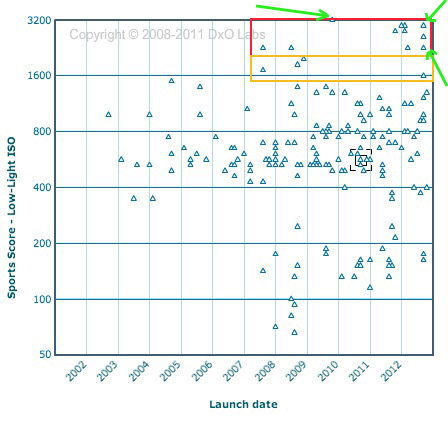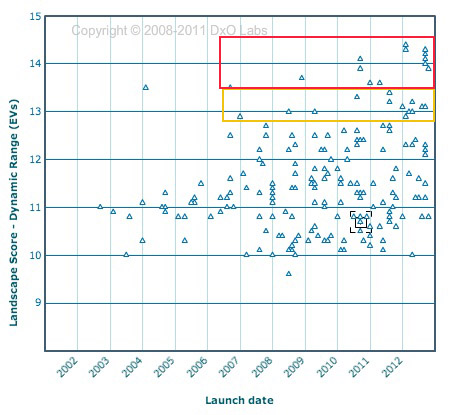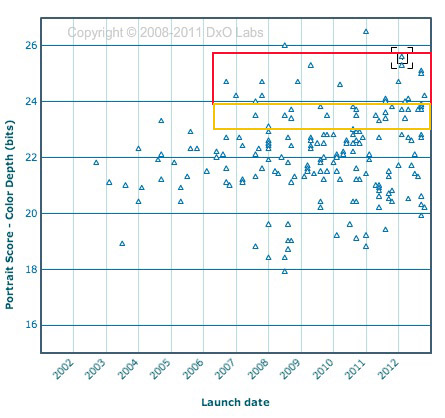Equipment
Roger Buys a Camera System: Screening for Candidates
As I mentioned in my last post, I have more time for photography now than I have for the last several years so I’m buying a personal camera system. While I can ‘borrow’ stuff from Lensrentals for a specific shoot I can’t just take a system and keep it at my house permanently.
My rule of thumb has always been if I need something 2 or 3 times a year, I’ll rent it, but if I need it more frequently than that I should buy it. Over the last few months I’ve found myself shooting with something different than my current system (Olympus OM-D E-M5 based) at least once or twice a month. It seemed time to investigate my options.
The purpose of this post is NOT to convince you that my choices are right for you. What I need and want in a system isn’t going to be what you need and want. The process I use to reach the decision may be interesting to some of you – I certainly get a half dozen emails a week asking how to choose a system. For most of you, though, who already are locked into a system, these couple of articles will not be very interesting. I apologize and we’ll return to our regularly scheduled blogging in a week or so.

- Image courtesy Lensrentals.com, 2013
Meet the Purchaser
As I wrote once upon a time in The Rashomon Effect, every one of us is going to have slightly different priorities and therefore make slightly different decisions. To make this useful to you, I’ll have to let you know a bit about me so that you can note where your priorities are different. If your photographic priorities and opportunities are far different from mine, my thoughts about selection will be of zero benefit to you. If what you need is somewhat similar to me, you might find my thoughts to be of some benefit.
I’m looking for serious hobbyist level equipment that will handle most of my needs. I’ll ‘rent’ for specific needs every so often.
I shoot occasionally with everything – that’s my job after all. That being said, I’m most experienced with Canon, Nikon, and Micro 4/3. But I think I’m fairly brand agnostic. I don’t think there’s any clearly best system, at least not right now — some have better cameras, others certain great lenses, and some have better service.
My photography skill level is moderate to good, definitely nowhere near great (If it was great I’d shooting bikini models on Ferrari’s nickel or on the sidelines at the Superbowl instead of writing this).
If I was a better photographer I could probably get by with lesser equipment. Since I am what I am, things that let me rescue borderline images, like image stabilization, extra megapixels, and a strong dynamic range may be more important to me than to you.
I have a good budget, but price is very important to me. I’m cheap. Plus within 6 months my wife will ‘mention’ whatever I spend on this system in comparison to a new piece of furniture or some home improvement. I’ll pay the man for something that’s clearly better, but if I can get 90% of the benefit for 60% of the price, I’ll head that way every time (A concept that my wife doesn’t quite understand).
I’m also a reliability and customer service fanatic, and I expect to be treated like the good customer I am. I consider reliability and service at the top of my list when I buy a car, and a camera system can be a ‘near car’ expense. I realize very few of you are going to let that influence your decisions like I do, so I should definitely mention that.
Finally, I want to take pictures now, so I’m not going to worry about what may come out in 6 or 12 months. It’s never what I expect it to be, anyway.
So What Am I Looking For?
The most important part of my search process will come last. By that I mean that using the camera, looking at images, seeing how the camera handles and focuses, etc. are going to be the final word in my decision.
But, at my last count, there are 50 odd cameras I might consider. I’m not going to shoot with all of them for a week. First, I’ll list out what I want, then do some screening research and come up with a list of systems that appear to meet my needs. Then I’ll rank and test out what’s on the list.
I should mention I’m a sucker for the cool features (the Canon 6D‘s wifi being my most current infatuation). I know myself well enough to realize I need to start logical before the bells and whistles make me loose my train of logical thought. I’ll also look around the edges of my list because sometimes I don’t realize I want something until I see it.
Nearly Absolute Requirements
I have a few requirements for my new system. (Focal lengths I use below are full-frame equivalent.)
Lenses
- A reasonably lightweight 400mm telephoto lens (zoom or prime)
- A high-quality macro lens (I prefer 100mm but am flexible)
- A high-quality 24-70 f/2.8 (I might consider f/4 with stabilization)
- A standard to slightly wide focal length, wide-aperture prime lens
- A wide-angle to ultra wide-angle lens (20mm acceptable, 14mm preferred)
Camera
- At least 16 megapixels resolution
- A viewfinder (optical preferred, good EVF acceptable)
- Shoe-mount flash
- Excellent ISO 800 performance
- Accurate Live View or contrast-based focus assist
- 3 frames per second minimum in RAW
- Microfocus adjustment
I won’t say the above are completely non-negotiable, but there would have to be a reasonable alternative for each of these requirements. But I’m not completely ruling out any system at this point.
One note about my megapixel requirement: I know people get wonderful 60 inch prints from their 12 megapixel cameras. I’ve got a wonderful 60-inch print from my 1 pixel camera. I call it “Snow Bank in Fog”. Print quality depends on a lot of things including how good the initial shot was in-camera, what the subject matter is, viewing distance, and more.
I wouldn’t hesitate to make a big portrait print from a 12 megapixel camera. But my macro images, heavily post-processed and often viewed from a foot or two away, really need at least 16 megapixels for a 20 inch print, especially if I’ve done a lot of post-process manipulation. I’ll accept that a more skillful photographer may never need over 16 megapixels so we can avoid a 50-comment argument about it. But this is my camera and I would like more freedom to crop for composition, post-process more heavily if I desire, or makeup for a slightly missed shot.
Things I Would Like
Lenses
- A tilt-shift
- A true supertelephoto (300 f/2.8 minimum, 500 f/4)
- A selection of reasonably-priced, high-quality prime lenses
- Good 70-200 image stabilized zoom
Camera
- At least 20 megapixels
- Excellent dynamic range
- Excellent ISO 1600, adequate ISO 3200 performance
- 5 frames per second in RAW
- Excellent single shot AF performance (realizing this is somewhat lens-dependent within each system)
Preliminary Camera Screening
I could eliminate some systems that clearly aren’t going to meet my wants now but I’d like to do a little more research first. I might find something that warrants further investigation.
I mentioned earlier that I can make most of the prints I want to from 16 megapixels, but sometimes feel I’m right on the edge there for what I print. Plus more pixels might let me crop a bit more aggressively if my composing is a bit off. I knew it would also make up, to some degree for a lens that doesn’t resolve quite as well, which I confirmed in my last article.
There are sensor factors other than pixel count that are going to make some difference to me, too. I’m not going to test those factors because DxOMark has already done that work better than I could. DxOMark is not The Word; nothing that tests a single sample can ever be The Word. But it provides excellent sensor data (please don’t twist this remark to claim I said something about their lens reviews; I’m talking sensor data) very nicely presented and easily used.
The Overall Sensor Score is a very blunt tool; I don’t find much benefit in compressing umpteen data points into a single number. However, I do find the three specific scores for high ISO performance, color depth, and dynamic range quite useful. I should mention I’m not looking for which camera has the absolute top score; I’ll leave that for Fanboys. I use it to compare cameras, find a range I think is excellent and good, and later compare those cameras for other factors.
Let’s start with the simplest benchmark, high ISO performance. The graph (color boxes are mine) simply shows the highest ISO setting at which each camera kept a 30dB signal to noise ratio, 9EV dynamic range, and 18-bit color depth. If you don’t care what that stuff all is, then simplify it by saying the ISO at which the camera was still giving really good images right out of the camera.
One of the nice things about the DxO graphs is they show the cameras by year of release so it let’s me know that the Nikon D3s (green arrow at the top of the page) has as high ISO performance that’s as good as the newer cameras to it’s right. This is a great tool to find 2 or 3-year-old camera that might fill your needs at a bargain price on the used market.

- DxOMark Sensor ISO performance www.dxomark.com
Again, I’m not looking for the very best camera. Real-world factors are going to make splitting hairs between the Nikon D600 (green arrow in the top corner) and the Canon 6D (green arrow along the right edge) a pretty silly thing to do. Rather I roughly thought everything in the red box is really, really good, the ones in the yellow box were certainly going to be acceptable to me, and those close to the yellow box would probably be just fine.
I repeated the exercise with the DxO Dynamic Range Score – (the DxO DR scores are measured at baseline ISO and I don’t always shoot there, but it’s still a worthwhile thing to look at). One EV equals about a stop of light. My red box for this graph shows cameras within 1 stop of the best (the Nikon D800) and my yellow box within about 1.5 stops of the best.

- DxO Dynamic Range performance www.dxomark.com
Color depth is a bit less important to me than to many people; I tend to postprocess in LAB space and false colorize regularly. But it’s worth checking the same way since DxO makes it easy to do. The cameras above the red line, BTW, and a few inside the red box, are Medium Format cameras that I’m not considering.

- DxOMark Color Depth performance www.dxomark.com
When the dust had settled, there were 7 cameras that rated in my ‘best’ boxes in all 3 categories. There were 5 more cameras that rated best in dynamic range and color depth, ‘good’ in ISO performance, and several more that were at least in my ‘good’ boxes in every category and a couple that were ‘best’ or ‘good’ in two areas, but barely missed ‘good’ in Dynamic Range. I did eliminate those that had less than 16 megapixels and the medium format cameras from my list.
| All Red (Best) | All Yellow (Good) | Near Miss (DR too low) |
|---|---|---|
| Nikon D800 | Nikon D3x | Canon 5D Mk III |
| Nikon D800e | Nikon D7000 | Canon 6D |
| Nikon D600 | Nikon D3200 | Canon 5D Mk II |
| Nikon D4 | Nikon D5100 | Sony A900 |
| Nikon D5200 | Pentax KII | |
| Sony RX1 | Pentax K-5 IIs | |
| Sony A99 | Pentax K-30 | |
| Pentax K-01 | ||
| Sony A77 | ||
| Sony A57 | ||
| Sony NEX-7 | ||
| Sony NEX-6 | ||
| Sony NEX-5R |
I looked at this list a bit and noticed a couple of things that were reassuring. First, the Olympus OM-D just barely missed the list, being just under my ‘good’ box in all the categories. I know that camera well. It fills many of my needs, although I will occasionally bump against its limitations. The list, then, contains cameras that should fulfill my needs, at least in theory.
Since I had decided the OM-D didn’t quite meet all my needs, I didn’t put it on the list. (Don’t get me wrong, I love the camera and have used it extensively for months. It just isn’t meeting enough of my needs now.) I should also note the Fuji X-Pro was not tested by DxO so it’s not here for that reason. But again, it doesn’t have the lenses that meet my absolute requirements list, so I won’t consider it further.
The table surprised me in several ways. First, was the dominance by Nikon cameras. I knew the D800/600/D4 cameras were highest on DxO’s rankings. I was a bit taken aback by how many Nikon APS-C cameras made this list and that no Canon APS-C cameras were even close. The current Canon crop sensor cameras are all older models due for replacement, but the gap still surprised me. Having shot with them, I know they meet my needs fairly well so perhaps my selection criteria was a bit tighter than it should have been. I certainly am not ruling them out just based on some numbers.
I wasn’t surprised by how well the Sony bodies did. After all, Sony’s sensor technology and patents are leading the pack right now. I was a bit surprised at how well the Pentax sensors rated. Again, I knew they were good, but perhaps didn’t realize just how good they were. While I wouldn’t rule out any camera just based on this list, the Pentax showing makes me very interested in looking at them a bit more thoroughly.
Narrowing Down a Little
I’m not ready to make a final list yet, but think it’s time to focus down a little and do some further comparisons.
Going back to my absolute needs the NEX system doesn’t really fill them. NEX doesn’t give me the telephoto I want at the quality I desire, nor the standard range zoom. Sure, I could rig up some things on adapters and make something that works, but I’ve got too many other options to consider that a prime choice.
I’ve been using the Olympus OM-D as my ‘home camera’ for a while and on paper it meets all my requirements except the 400mm lens one. This is going to set some Fanboys off, I know, but having shot extensively with the Olympus 75-300 and Panasonic 100-300, neither makes it for me. I’m sure someone has used that combination to shoot a mountain lion for the cover of National Geographic. Unfortunately, the image quality I’m getting with either can’t compete with good telephoto zooms on an SLR. I’m going to use the OM-D system as my baseline comparison. I expect my new system to meet my needs better than it does.
Obviously I’ll want to evaluate the Nikon systems. I’ve demonstrated to myself (if no one else) that the resolution of the D800 bodies can let me use a slightly less capable lens and still get marvelous results. The performance of the Nikon crop-sensor bodies on my little DxO search makes those worth further investigation, too. I’ve historically shot full-frame, but spending the last 6 months with an m4/3 system has shown me I could probably do most of my photography just fine with an APS-C sensor camera and rent a big boy when needed.
I love Canon’s lens selection, so I’m definitely going to consider a Canon system. While I know from experience the Canon crop-sensor cameras are capable, the numbers I’m looking at make me wonder if there’s much to attract me with the Canon 7D or 60D. I certainly am going to look at the 5D Mk III or 6D, though. They’re definitely competitive.
The Sony system definitely requires more investigation, too, and I’m interested in evaluating their improved AF system, which I’ve used only a few times. The surprise to me, at this point, is how well Pentax does by the numbers. I’ve shot with their cameras and been impressed by several features and the ergonomics, of course, but I haven’t really considered it as an entire system. I will now.
I don’t need a 10-frames-per-second pro body for what I shoot, the Canon 1D IV and 1Dx, and Nikon D4 and D3x aren’t on my list. I may revisit things and decide to look at some other cameras later, but for right now this is what I think I’ll consider further:
Full Frame:
- Nikon D800e
- Canon 5D Mk III (I like the 6D’s built in Wi-Fi but prefer the III’s better AF – I reserve the right to change my mind)
- Sony A99
APS-C Frame
I’m not certain the camera I choose will be one of these, but they’re certainly the front runners at this point.
In the next article I’ll look a bit at system (rather than camera) costs before I start actually evaluating things further.
Roger Cicala
Lensrentals.com
February, 2012
Author: Roger Cicala
I’m Roger and I am the founder of Lensrentals.com. Hailed as one of the optic nerds here, I enjoy shooting collimated light through 30X microscope objectives in my spare time. When I do take real pictures I like using something different: a Medium format, or Pentax K1, or a Sony RX1R.
-
Justin
-
Heidfirst
-
JonR
-
sbiessel
-
RohithT
-
Daniel
-
Aaron
-
Lynn
-
nandadevieast
-
armis
-
lisandra
-
Aaron
-
Blunt
-
Gordon Lewis
-
Martin
-
Rich
-
Tony
-
Mike
-
Clement
-
Pete Johnson
-
Ben
